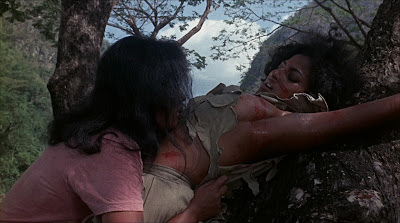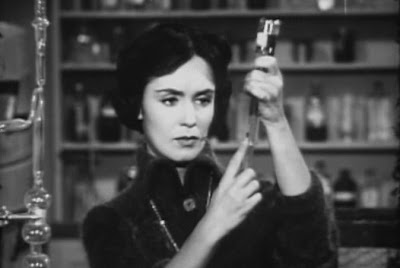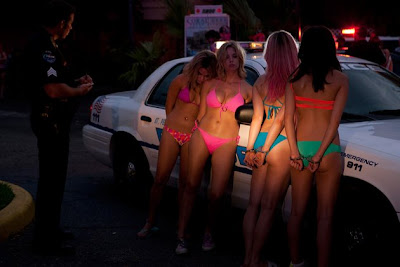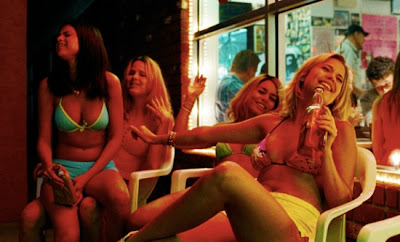Director: Gerardo de Leon
Stars: Pam Grier, Roberta Collins, Judith Brown
Genre: Exploitation
A sort of spiritual successor to The Big Doll House, which came out only months earlier. It features much of the same cast (Pam Grier, Roberta Collins, Judy Brown), the same producer (Roger Corman) and it also shares a near identical plot and set of characters. I suppose the question then is, which is better?
The plot follows, as you may expect from a film of the Women in Prison subgenre, women in prison who wish to escape. In this particular case (as with The Big Doll House) the prison is run by a sadistic lesbian guard (played by Pam Grier, in a reverse role from last time). Throw in some stuff about heroin and prostitution and you've got yourself a prime exploitation picture!
In many ways Women in Cages is better than The Big Doll House, but in some regards it's worse. First off the cinematography and general imagery is much better here. I daresay that Gerry de Leon was a bit more competent of a director than Jack Hill in that area. So, in turn, we get a film that actually looks pretty cool.
The acting, as is to be expected, isn't exactly great. But any exploitation fan will be happy enough seeing the likes of Pam Grier and Roberta Collins on screen at once. So though the acting may be b-grade, the cast is definitely good...if you're a fan of course.
There's not quite as much nudity in here as you may expect from a film about a sadistic lesbian and a prison full of women. Which, I suppose, is a bit disappointed for a film titled as such. The mud-wrestling and food fights of The Big Doll House certainly has Women in Cages beat when it comes to the tits-and-ass department.
The film is mostly without a score but what little soundtrack there is is pretty decent.
It's not a terrible exploitation flick and it's pretty enjoyable throughout. Watch it for the legendary Pam Grier and the beautiful Roberta Collins. For fans of the genre only.
Purchase Women in Cages on Amazon: Blu-Ray - DVD - Stream - VHS
Stars: Pam Grier, Roberta Collins, Judith Brown
Genre: Exploitation
A sort of spiritual successor to The Big Doll House, which came out only months earlier. It features much of the same cast (Pam Grier, Roberta Collins, Judy Brown), the same producer (Roger Corman) and it also shares a near identical plot and set of characters. I suppose the question then is, which is better?
The plot follows, as you may expect from a film of the Women in Prison subgenre, women in prison who wish to escape. In this particular case (as with The Big Doll House) the prison is run by a sadistic lesbian guard (played by Pam Grier, in a reverse role from last time). Throw in some stuff about heroin and prostitution and you've got yourself a prime exploitation picture!
In many ways Women in Cages is better than The Big Doll House, but in some regards it's worse. First off the cinematography and general imagery is much better here. I daresay that Gerry de Leon was a bit more competent of a director than Jack Hill in that area. So, in turn, we get a film that actually looks pretty cool.
The acting, as is to be expected, isn't exactly great. But any exploitation fan will be happy enough seeing the likes of Pam Grier and Roberta Collins on screen at once. So though the acting may be b-grade, the cast is definitely good...if you're a fan of course.
There's not quite as much nudity in here as you may expect from a film about a sadistic lesbian and a prison full of women. Which, I suppose, is a bit disappointed for a film titled as such. The mud-wrestling and food fights of The Big Doll House certainly has Women in Cages beat when it comes to the tits-and-ass department.
The film is mostly without a score but what little soundtrack there is is pretty decent.
It's not a terrible exploitation flick and it's pretty enjoyable throughout. Watch it for the legendary Pam Grier and the beautiful Roberta Collins. For fans of the genre only.
Purchase Women in Cages on Amazon: Blu-Ray - DVD - Stream - VHS













































